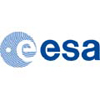
This prize competition seeks outline proposals to develop solutions for the UK rail industry, involving the integration of two or more satellite-based systems (communications, navigation and remote sensing) with conventional (non-space) ones.
The aim is to develop solutions that either meet rail industry needs which cannot otherwise be fulfilled, or improve upon existing solutions.
Up to three prizes will be awarded, each with a value of .50,000. Each prize will be used to fully fund a feasibility study as part of the European Space Agency.s Integrated Applications Promotion programme (IAP). Upon successful completion, this could then serve as a stepping stone to the initiation of a demonstration project. The prize is backed by the European Space Agency (ESA) and the Enabling Innovation Team of the UK rail industry (EIT), with the support of the Satellite Applications Catapult Centre and the Technology Strategy Board (TSB). The prize seeks to address some of the grand challenges facing the UK rail industry. More information on these can be viewed @
http://www.futurerailway.org/RTS/Pages/Intro.aspx
http://www.futurerailway.org/eit/pages/default.aspx
http://www.networkrail.co.uk/publications/technical-strategy
Note also the list of current IAP studies and projects at http://artes-apps.esa.int/projects
Given these grand challenges, a list of likely topics for study proposals is set out below. This is indicative and not prescriptive: other ideas may also be submitted but bidders should generally avoid areas in which much work has already been done, as referenced above. Note also that technical feasibility will be an assessment criteria and hence bidders should give some indication of the levels of accuracy, reliability and resolution that are envisaged and achievable e.g. in the measurement of infrastructure.
Information concerning Space for Rail Prize: iap@esa.int
Information concerning Satellite Applications Catapult Facilities: lorraine.moody@sa.catapult.org.uk
The deadline for submissions will be set for the 29th November 2013.
Winners will be announced in the 1st quarter of 2014.
This competition is open only to UK entities.
Indicative list of likely topics for feasibility studies
- Monitoring and control of mobile assets.
- Monitoring of freight (especially of sensitive cargoes), trains, rolling stock, personnel and equipment, e.g. on rural lines or those not well covered by terrestrial communications systems, or where track-based monitoring is sparse or too expensive to maintain or replace;
- Signal control systems based on the train rather than track side (but bidders should avoid duplication of two ongoing IAP studies on signalling at railway level crossings);
- Scheduling and information on journey progress for intermodal freight and logistics systems.
- Monitoring and maintenance of railway infrastructure.
The topic covers the identification and prediction of hot spots that are likely to cause service degradation; and also the enabling of early warnings and preventative action. It includes:- Monitoring of structures (bridges, embankments, cuttings, etc). Proposals must not replicate what is being done e.g. in the IAP LiveLand study on landslides and subsidence; they should focus instead on new approaches, or on applying techniques from other sectors;
- Data mining and management as applied to infrastructure monitoring, including the extraction of data from Earth Observation satellites for specific target locations;
- Erosion and flooding, by rivers or sea;
- Vegetation monitoring and growth prediction;
- Overhead Line Equipment (OLE);
- Temperature monitoring of railway track and other infrastructure (but note the need for achieving very high levels of resolution);
- Human activities (e.g. illegal waste dumping, trespassing, status of fences and boundaries, theft);
- Animals on or near the railway (including identification of indicative changes in land use);
- Security of critical infrastructure and overall integrity of the infrastructure.
- Autonomous Systems and Robots.
This covers the use of such systems to improve efficiency and safety of train operations, infrastructure and maintenance. The aim is to reduce the need for personnel on the network, thereby reducing risks and costs with systems that are accurate and repeatable. It includes:- Driverless trains (but note the need to avoid replication of much ongoing work);
- Unmanned Aerial Systems (UAS) as applied specifically to railways;
- Automated or partly automated construction and maintenance systems;
- SCADA (Supervisory Control and Data Acquisition) systems with associated remote sensors and data communications capabilities;
- Safety warning systems (excluding railway level crossings as noted above).
- Energy efficiency and energy management (for trains and infrastructure)
- Emergency and disaster response (including medical emergencies).
 |  |  |  |


